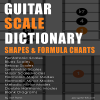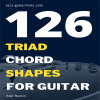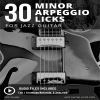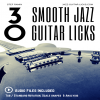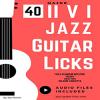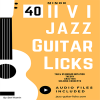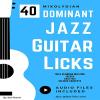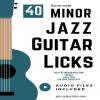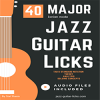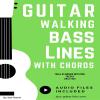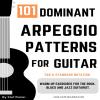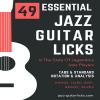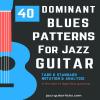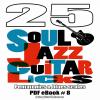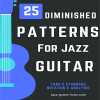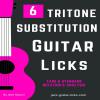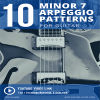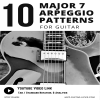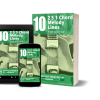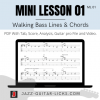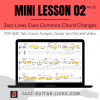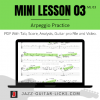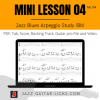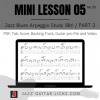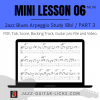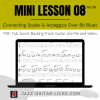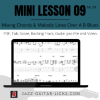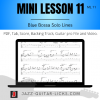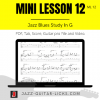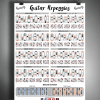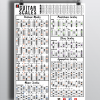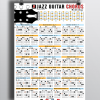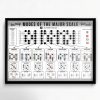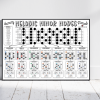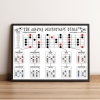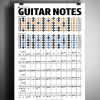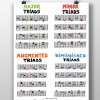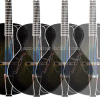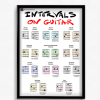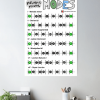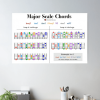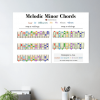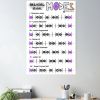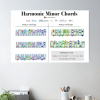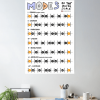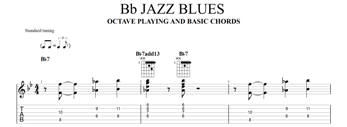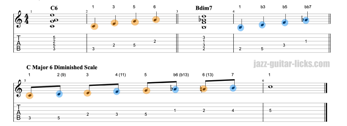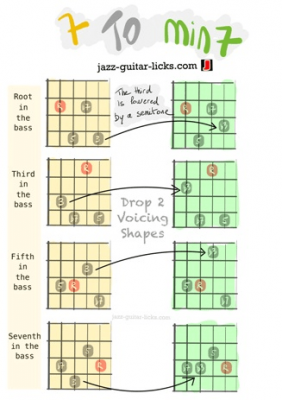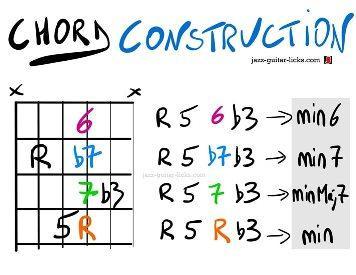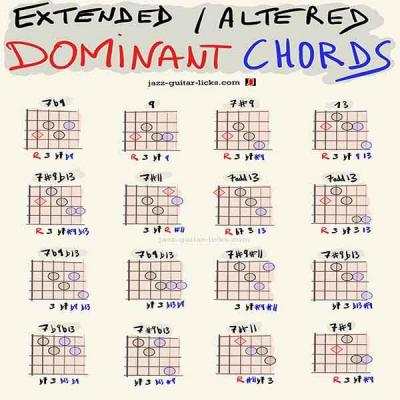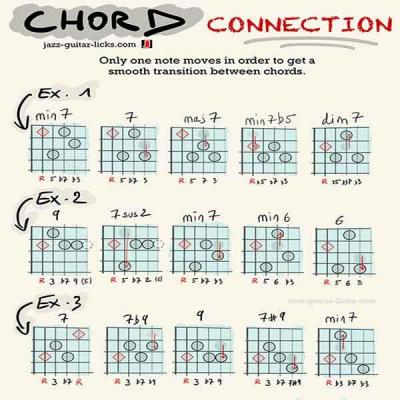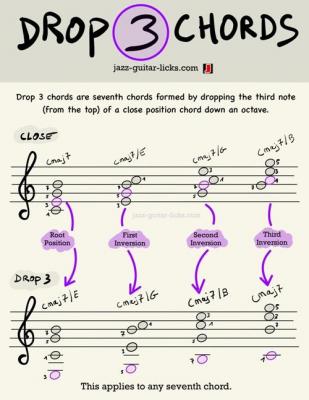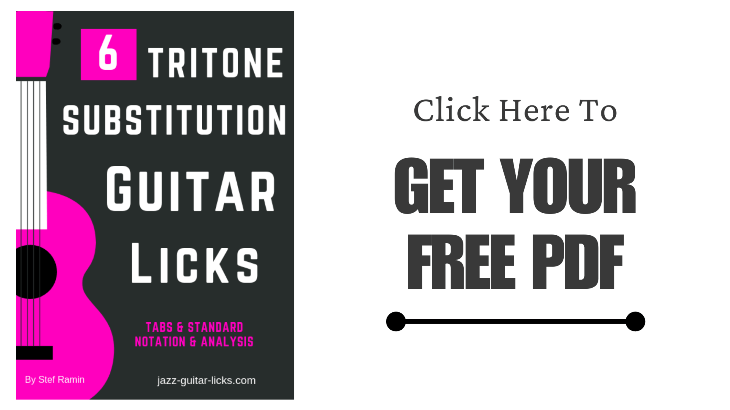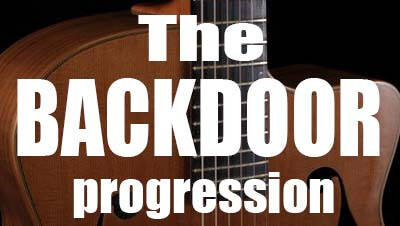
What Is a Backdoor Progression And How To Play Over It
- By jazz-guitar-licks
- On 2018-01-27
- In Jazz Guitar Lessons
- 0 comments
In jazz, there are many types of turnarounds and progressions that eventually we all must encounter. A key part of how you practice should be in preparing yourself for these progressions and turnarounds.
Whether that is by learning a shed-full of Parker’s II V I licks, by practicing exercises over progressions or even by learning a new standard.
The end result is that you are better equipped to deal with what is in front of you in the moment on the bandstand.
To this end, I’m going to talk to you today about a progression known as the backdoor progression.
What is it Made up of And What Does it Look Like?
A backdoor progression in the key of C maj is made of an Fm7 chord to a Bb7 chord and finally to a C maj7th chord.
It’s called a backdoor progression because, unlike a standard II V I resolution, it approaches the tonic chord (C maj) from Bb7th chord which is a tone below the root.
A standard II V I resolution approaches the tonic chord from its dominant chord with is a G7 in this case.
So you could say that V I is the frontdoor and bVII I is the backdoor.
This may strike you at first as a little bit weird. Why on earth would you play a Bb7th chord in place of a G7th chord? The answer lies in the notes which make up each chord.
Backdoor progression chords
How Does The Backdoor Progression Works ?
This picture shows the chord tones which spell out a Bb7 chord and a G7 chord.
It becomes clearer that the reason a Bb7 chord works in place of a G7 when resolving to a C major chord is that they share chord tones.
G7 and Bb7 both have a F and a D in them which means that they will function similarly when voice leading to a C maj7th.
F will fall a semitone to the E of the C maj chord (the major 3rd) and the D will fall to the C (root).
Chord tones
Where Can I Find the Backdoor Progression and What Should I Play on it?
Lady bird – Tadd dameron
Backdoor progressions can be found in many notable jazz standards but there are a few examples which I think it may be useful for you to know about.
Bars 3 and 4 of this classic standard contain a backdoor progression in the key of C major, just as in our example above.
This is a great one to learn in general, but also because of this example of an accessible backdoor progression.
Stella by Starlight – Victor Young
Finally, I leave you with an example of a backdoor progression without it’s II chord preceding it. In this case the Ab7 is the backdoor leading to Bb major.
This is just as common as seeing this with it’s II chord which would be Ebmin in this case.
So if you see a 7th chord which is a tone below the chord it resolves to, that is a backdoor cadence. It doesn’t always have to have a minor 7th chord in front of it.
This leads me onto what you can play over these chord progressions:
As a general rule, when you see a 7th chord that IS NOT the dominant of the tonic chord that you are resolving to, you should play the Lydian dominant scale.
So in the key of C major, on the Fmin7 chord you can play a dorian scale or any other minor scale with the b7th.
But on the Bb7 chord, you should play a Bb Lydian dominant scale.
Bb Lydian dominant = Bb C D E F G Ab
The only difference between this scale and a mixolydian scale that you might play on a dominant chord is the fact that it has the #11th instead of a natural 11th – E natural instead of Eb.
This is why when you see a backdoor progression, it may sometimes be written as 7th #11 chord instead of just a 7th chord – so in my example from Stella By Starlight, you may see that Ab7 chord written as an Ab7#11 chord.
A Quick Backdoor Progression Lick
In the spirit of the name of the website, it’s only right that I provide you with a jazz guitar lick to finish off the article.
What makes this lick interesting is that I have included a few things that might seem just plain wrong, but because they are voice led strongly, they make a strong sound.
On the Fmin7 chord you may notice that there is an A natural on the final quaver of the bar.
This is the major 3rd of F not the minor 3rd as the chord is indicating.
The reason why this works is because the A natural quickly falls to the Ab in the next bar – this is the b7th of Bb7#11.
The first 5 notes of the lick imply a scale called the Bebop Dorian Scale which is an 8 note scale.
This scale has both the major 3rd and the minor 3rd in it.
Bebop dorian scale – F G Ab A Bb C D Eb
The second part of the lick strongly implies Bb Lydian dominant as it contains an E natural (#11) and and Ab (b7th) but you may notice at the end that it resolves to the E of the Cmajor chord chromatically via an Eb.
So basically this bar contains both a #11 ( E) and a natural 11th (Eb).
Thanks for reading this and I hope it proves useful! Let me know in the comments if you have anything specific that you would like me to write about in my next articles for jazz-guitar-licks.com
About the author
![]() Luke Adams is a session guitarist and jazz musician based in Cardiff, Wales. He’s currently studying for a degree in Jazz Guitar from the Royal Welsh College of Music and Drama and is taught by some of the top musicians in the UK.
Luke Adams is a session guitarist and jazz musician based in Cardiff, Wales. He’s currently studying for a degree in Jazz Guitar from the Royal Welsh College of Music and Drama and is taught by some of the top musicians in the UK.
He regularly performs around the UK with various professional projects whilst also composing original music and performing with his own contemporary jazz trio – 2alike. Luke is also a keen writer and tutor both online and in 1-1 lessons.
https://lukeadamsguitar.co.uk
-
Guitar Chord Dictionary
This PDF eBook provides over 550 guitar chord shapes. This is the perfect reference guide to understand how chords are built and how to play them on the guitar neck. -
Guitar Scale Dictionary
This E-book is a printable PDF method including over 700 scale diagrams and formula charts for guitarists. -
Harmonized Scales For Guitar
Complete guitar PDF on harmonized scales: major, minor, harmonic and melodic. Includes chord and arpeggio diagrams, charts and practical tabs. -
172 Arpeggio Shapes For Guitar
This printable PDF is a method dedicated to guitarists of all styles who want to learn build and play the most important types of arpeggios. -
126 Triad Chord Shapes
This handbook for guitar players is intended both for teachers and students. It includes 126 guitar shapes for mastering triads. -
Harmonic Major Scale Chords
this PDF offers diagrams and tabs for guitar to learn the chords of the harmonic major scale. -
Major Scale Harmonization
This package provides a printable PDF with exercises and audio files to learn how to harmonize the major scale with 3 note chords and their extensions. -
30 Minor Arpeggio Licks
This package includes a printable PDF method containing 30 exercises with tabs, staves and audio files for practicing minor arpeggios on guitar. -
II V I Bundle - 170 Exercises
This bundle contains 4 PDF methods for a total of 170 exercises with tabs, staves, analysis & audio files for practicing scales, arpeggios licks & chords over the 2-5-1 progression. -
Diatonic Licks Bundle
This package contains 120 jazz guitar lines based on diatonic modes as Mixolydian, Dorian and Ionian. PDF format with tabs, audio files and analysis. -
30 Groovy Jazz Guitar Licks
This downloadable package contains a PDF WITH audio files giving access to 30 groovy guitar phrases mixing jazz, blues and funky licks for beginners. -
30 Smooth Jazz Guitar Licks
In this package you'll get a printable PDF Method with tabs, notation, analysis, scale shapes and audio files for practicing 30 smooth jazz guitar licks. -
40 II V I Jazz Guitar Licks
This pdf method for guitar contains fourteen 2 5 1 jazz guitar lines with tab, standard notation, analysis, scale charts and audio files. -
50 II-V-I voicings
This printable PDF guitar method provides 50 exercises with audio files, analysis, tab and staves for learning major 2-5-1 chord voicings. -
40 Minor 2 5 1 Chord Voicings
This PDF method contains 40 exercices with tabs, scores and audio files for practicing jazz guitar chords over the minor 2 5 1 progression. -
40 Minor II V I Licks
This guitar method is a printable PDF with tabs, diagrams, theory and audio files providing 40 minor 2 5 1 jazz patterns. -
40 Mixolydian Jazz Guitar Lick
PDF guitar method with tabs, audio files and theory providing 40 dominant jazz guitar lines for teachers and students. -
40 Minor Jazz Guitar Licks
This printable guitar method in PDF format contains 40 easy minor jazz guitar lines based on the Dorian mode. -
40 Major Jazz Guitar Licks
Printable PDF eBook method containing 40 major jazz guitar licks with tab, standard notation and audio files for beginners and intermediates. -
Guitar Walking Bass Lines
This jazz guitar method about walking bass lines and chords is available as a PDF files containing 35 exercises with tabs, analysis and audio files -
101 Dominant Arpeggio Patterns
This printable PDF method provides 101 dominant arpeggio exercises with tab, theory and standard notation for the jazz, blues and rock guitarist. -
49 Essential Jazz Lines
This printable eBook method in PDF format provides 49 jazz solo transcriptions of the greatest jazz musicians. Tab, standard notation, audio files & analysis. -
11 Jazz Blues Studies
11 jazz blues chord studies with tabs, standard notation, analysis, and audio recordings and PDF. -
10 Easy Fingerstyle Blues
This PDF with Tabs and audio files provides 10 easy acoustic fingerstyle blues guitar studies for kids and beginners. -
25 Altered Jazz Guitar Lines
This PDF eBook method contains 25 altered jazz guitar licks with tabs, patterns, scale charts and audio files to master, apply and develop the altered scale. -
40 Blues Dominant Patterns
This printable method is available as a PDF file containing 40 easy dominant jazz-blues guitar lines with tabs, standard notation, analysis, audio files and scale charts. -
25 Pentatonic Licks
This jazz guitar method is an eBook available as a PDF with standard notation, guitar tabs, diagrams, analysis, audio files and backing tracks. You will find in this booklet 25 easy jazz guitar lines with theory using common and rare pentatonic scales. -
25 Soul Jazz Guitar Licks
You will find here an eBook available in PDF containing 25 soul jazz and hard bop guitar licks in the style of Grant Green, Melvin Sparks, George Benson. -
25 Diminished Patterns
This eBook PDF with audio files contains 25 dominant diminished jazz guitar patterns using the half-whole diminished scale and diminished 7th arpeggios. -
6 Tritone substitution licks
This Printable PDF eBook available for free download contains 6 easy jazz guitar licks with tabs/notation, youtube video link and analysis about the tritone substitution. -
10 Minor 7 Arpeggio Patterns
This printable PDF eBook offers 10 easy minor 7 arpeggio patterns with its related YouTube video for beginner guitarists. -
10 Easy Major 7 Arpeggio Licks
This is a printable PDF for beginner jazz guitar players providing 10 easy licks to practice major 7 arpeggios. -
10 Chord Melody Lines
Within this package, you'll discover a set of ten chord melody exercises for beginners. Printable PDFaudio files, a backing track, and a link to the associated YouTube video. -
10 Minor Blues Scale Licks
You'll find here a PDF with 10 easy jazz guitar licks to practice the minor blues scale on guitar.
-
Mini Lesson 01 (ML 01)
You'll find a mini guitar lesson about walking bass lines and chords containing a PDF with tab, score analysis, shapes, a video and a guitar pro file. -
Mini Lesson 02 (ML 02)
In this mini jazz guitar lesson you will learn how to play easy and cool jazz lines over basic chord changes found in jazz. Pdf, tab and video included. -
Mini Lesson 03 (ML 03)
With this short lesson you will learn how to play and connect basic guitar arpeggios over a diatonic chord progression. -
Mini Lesson 04 (ML 04)
This is a downloadable package with PDF, Tab, guitar pro file and video to practice guitar arpeggios over a jazz blues chord progression. -
Mini Lesson 05 (ML 05)
This downloadable package provides a PDF with Tab/score, a guitar pro file and a short video for practicing guitar arpeggios on a jazz blues progression in Bb. -
Mini Lesson 06 (ML 06)
This package for guitarists contains a PDF with tab, video, backing track and guitar pro file for practicing arpeggios over a basic jazz blues progression. -
Mini Lesson 07 (ML 07)
With this mini guitar lesson you will learn how to superimpose arpeggios over a diatonic chord progression. Video, pdf, jamtrack and guitar pro file included. -
Mini Lesson 08 (ML08)
Mini lesson with PDF, guitar pro file, video and backing track for practicing scale and arpeggio connections over a Bb jazz blues progression. -
Mini Lesson 09 (ML09)
This mini lesson is a downloadable package containing a PDF, video, backing track and guitar pro file of a jazz blues progression study in B. -
Mini Lesson 10 (ML 10)
This mini guitar lesson provides a printable PDF with tab/notation, video, backing track and guitar pro file for practicing open triads over Fly Me To The Moon. -
Mini Lesson 11 (ML 11)
This guitar lesson is a package inlcuding a PDF transcription with analysis, a short video, a backing track and a guitar pro file to learn to play jazz solo lines over Blue Bossa. -
Jazz Blues Guitar Study (ML12)
This mini lesson provides a video, a guitar pro file and PDF transcription of a jazz blues study in G implying melodic lines, chord extensions and substitutions
-
Guitar Arpeggios Poster
This giant guitar poster for any guitar player, student or instructor contains colorful arpeggio diagrams. Giant size 24 x 36 inches (60 x 90 cm). -
Guitar Scales Poster 24*36
Guitar posters and wall art with eighteen neck diagrams representing the most used scales in music. -
Guitar Chord Poster
This printed color posters contains 63 guitar chord diagrams for jazz players, students, teachers and schools. -
Guitar Modes Poster
Guitar reference posters and wall art about modes of the major scale for guitar teachers, students and music schools. -
Melodic Minor Modes Poster
Educative and decorative giant guitar poster with neck diagrams, interval names about the seven modes of the melodic minor scale. -
Pentatonic Scale Guitar Poster
This guitar reference poster shows the positions and intervals of the major pentatonic scale. -
Guitar Notes Poster
This is a giant poster showing the notes on the guitar fret board and their positions on a musical staff. -
Triads Guitar Poster
This reference poster show the positions and intervals of the main triads used on guitar. This is a useful tool for guitarists, teacher and students. -
Four Archtop Guitars Poster
This is a decorative poster with four archtop jazz guitars. Several size and colors in landscape format available on Teespring and redbubble. -
Intervals On Guitar - Poster
This giant poster for guitar provides neck diagrams with interval positions. -
Melodic Minor Modes
This music theory poster available in several sizes shows the construction of the seven modes of the melodic minor scale. -
Major Scale Chords
This handy poster provides a clear visual guide to the chords built from the major scale, helping you recognize patterns and improve your playing. -
Melodic Minor Chords
Explore the rich harmonic possibilities of the melodic minor scale with this essential guitar poster. -
Harmonic Minor Modes
This music theory poster, offered in various sizes, demonstrates the structure of the seven modes of the melodic minor scale. -
Harmonic Minor Chords
Discover the chords of the harmonic minor scale with this guitar poster. -
Major Scale Modes
This poster is created for music teachers and students, illustrating the structure of the seven modes of the major scale.
jazz guitar chords chords chord progressions backdoor progression
Add a comment







